What are gigachad's political views?
80% of people in the 90th percentile of attractiveness/health/childhood health/mental stability/height/intelligence are more right wing than the average person.
Empirically, being right wing is correlated with attractiveness, mental stability, height, low intelligence, and health — especially as a child.
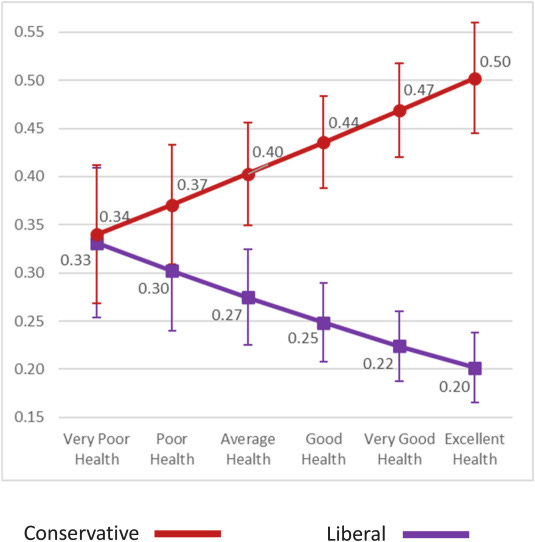
Given these traits are not independent, it would be ideal to estimate the independent association each variable has with political views through a regression model.
The WLS has good data on attractiveness (average of 12 different raters who rated a highschool yearbook photo), height1 (self-report, which is accurate), health (Health Utilities Index, round 5), and political identification (self-report, round 5).
I controlled the four variables for sex and ran the regression:
The effect of height on political views reduces by 30% when controlling for attractiveness and health, but it still passes statistical significance; the association between political views and the other two variables was similar before and after applying controls. Visually, linearity between the independent and dependent variables appears to hold2.
I have yet to estimate the relationship between political views and mental instability, intelligence, and childhood health. According to this study, the correlation between childhood health and conservatism is about 0.12, the correlation WORDSUM test scores and right-wing identification in the latest wave of the GSS is -0.12, and the estimated correlation between mental stability and being right wing is 0.41 in standardized notation3.
Using these coefficients, I predicted the percentage of people who were more right wing than the average person at the 90th percentile of each variable (attractiveness, IQ, height, mental stability, health, childhood health)4 :
logit_model <- glm(
right ~ mental_stability + child_health + health + attractiveness + height + IQ,
data = people,
family = binomial(link = "logit")
)
new_data <- data.frame(
mental_stability = 1.28,
child_health = 1.28,
health = 1.28,
attractiveness = 1.28,
height = 1.28,
IQ = 1.28
)
predict(logit_model, newdata = new_data, type = "response")
1
0.7900809 The model predicts that 79% of people at the 90th percentile of each trait are more right wing than the average person. A reasonably large effect.
If one adjusts for measurement error5, the probability increases to 80.6%:
vec_child_health <- rnorm(1000000, mean=0, sd=1)
vec_health <- rnorm(1000000, mean=0, sd=1)
vec_attractiveness <- rnorm(1000000, mean=0, sd=1)
vec_height <- rnorm(1000000, mean=0, sd=1)
vec_mental_stability <- rnorm(1000000, mean=0, sd=1)
vec_IQ <- rnorm(1000000, mean=0, sd=1)
0.12/sqrt(0.75*0.82)
0.12/sqrt(0.84*0.82)
0.059/sqrt(0.76*0.82)
0.058/sqrt(0.86*0.82)
0.035/sqrt(0.93*0.82)
no_leftism <- 0.1530184*vec_child_health - 0.1445888*vec_IQ + 0.07473745*vec_health + 0.0690672*vec_attractiveness + 0.04007926*vec_height + 0.41*vec_mental_stability + rnorm(1000000, mean=0, sd=1)*sqrt(1-0.1530184^2-0.07523405^2-0.0690672^2-0.04007926^2-0.41^2-0.1445888^2)
people <- data.frame(rightism = no_leftism, mental_stability = vec_mental_stability, child_health=vec_child_health, health=vec_health, attractiveness=vec_attractiveness, height=vec_height, IQ = vec_IQ)
people$right[people$rightism>0] <- 1
people$right[people$rightism<0] <- 0
logit_model <- glm(
right ~ mental_stability + child_health + health + attractiveness + height + IQ,
data = people,
family = binomial(link = "logit")
)
new_data <- data.frame(
mental_stability = 1.28,
child_health = 1.28,
health = 1.28,
attractiveness = 1.28,
height = 1.28,
IQ = 1.28
)
predict(logit_model, newdata = new_data, type = "response")
1
0.8061906
Everybody claimed to be between 50 and 80 inches tall.
According to Emil Kirkegaard, the correlation between mental instability (composite of anxiety, depression, and happiness) and wokeness is 0.41 when measurement error is partialled out. I decided to use the correlation instead of the estimated effect (25% lower), as this exercise focuses on prediction and not causality. Said study I base these statistics on was retracted, but for political reasons.
Surprisingly enough, health as a child and as an older adult correlate very weakly, so adjusting for the fact that child health and adult health are multicorrelated is unnecessary. Going from univariate to multivariate models in the case of height/attractiveness/health didn’t change much.
Reliability of each variable: WORDSUM, 0.84, self-reported height, about 0.93; attractiveness, 0.86 in the WLS; self-reported left/right political views load at 0.82 on the common factor of political views (see pdfforanybody); reliability of self-reported health is at most 0.75, as the correlation between self-reported health at two points in time separated by 30 days; and the reliability of the health utilities index is 0.76. The coefficient for mental stability is already controlled for reliability.


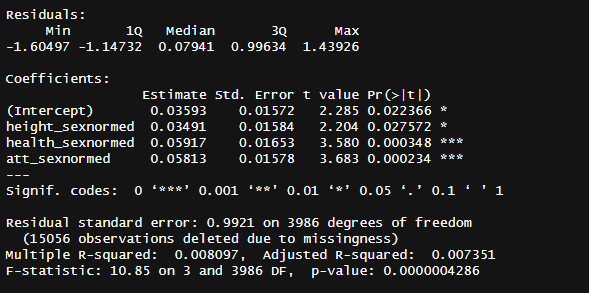

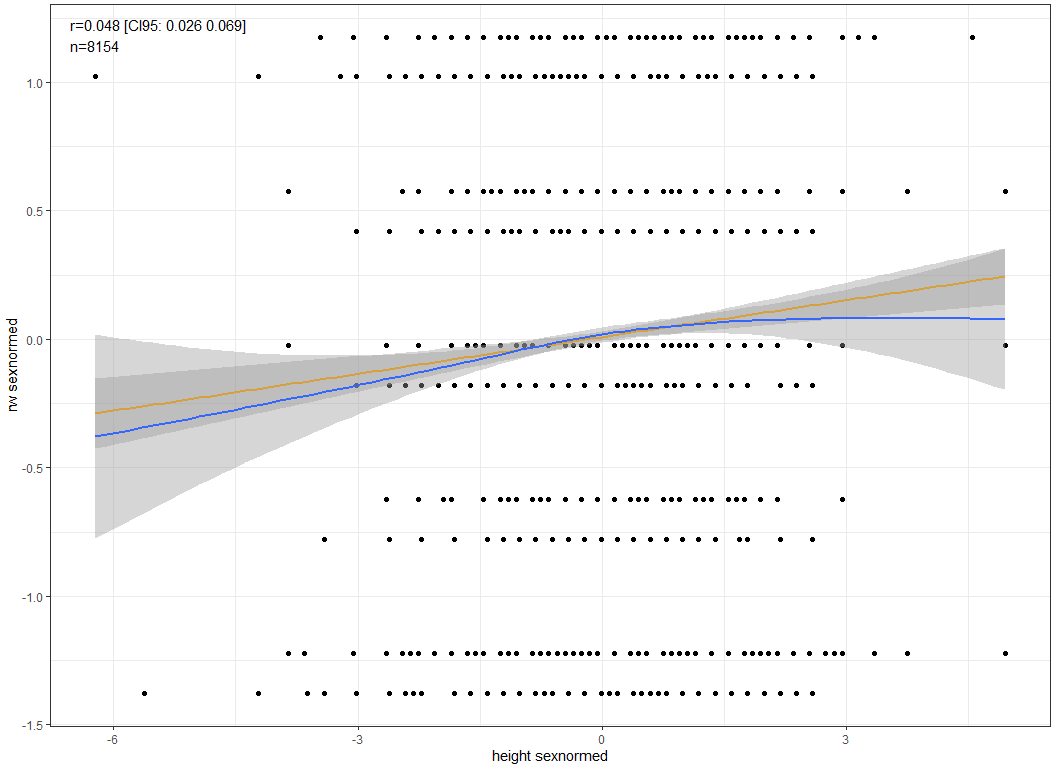
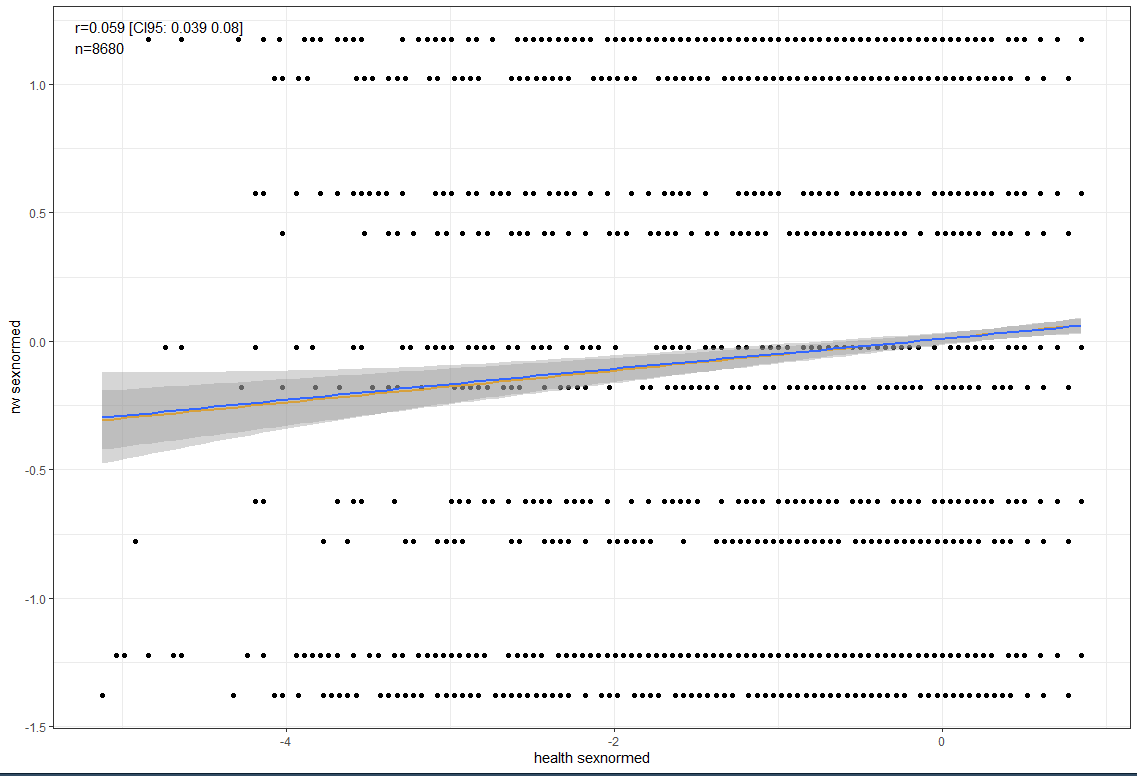
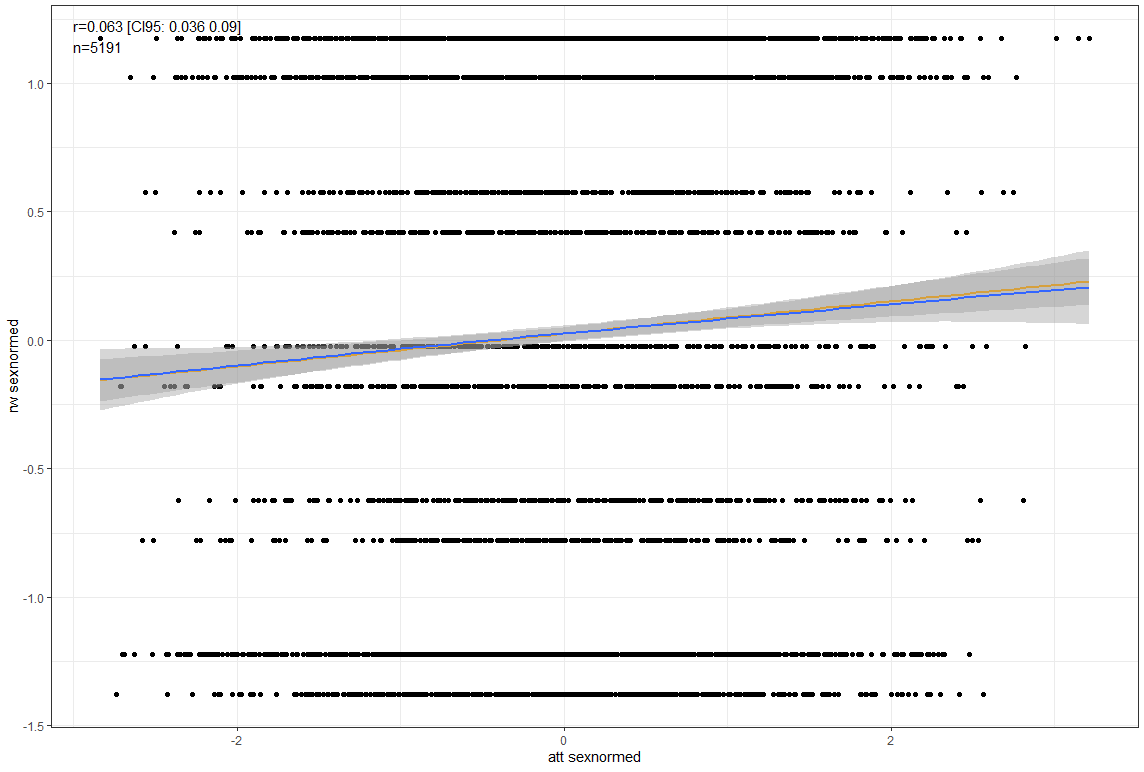
"The effect of height on political views reduces by 30% when controlling for attractiveness and height" you mean health?
I'm thinking about making this into a video. thoughts?